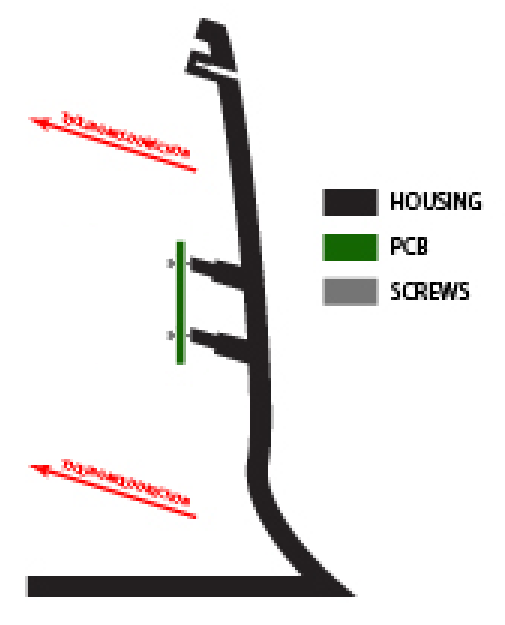We have a problem with mounting a PCB at a different angle than the mold direction angle. I have graphic below to help explain. If we were to build standoffs at the same angle as the mold direction but we need that PCB to be 90 degrees from the ground plane. What is the best method for mounting this? Any help would be great.
-
1$\begingroup$ That is a mechanical engineering problem and you should ask it on the ME site and not here $\endgroup$– Marcus MüllerCommented Sep 7, 2017 at 23:05
-
$\begingroup$ @MarcusMüller What ME stack exchange site would that be? Why is this sight not appropriate for mechanical engineering questions? $\endgroup$– Eric SCommented Sep 8, 2017 at 2:29
-
1$\begingroup$ Consider upvoting answers instead of thanking people. $\endgroup$– joojaaCommented Sep 10, 2017 at 0:54
5 Answers
Does it have to be mounted directly to the housing, or could you use a mount-adjustment plate between the housing and the PCB? it seems to me like the mounting adjustment plate would make your life much easier as you wouldn't need to worry about the screw-hole direction of the PCB.
suggested solution 1:
The image, of course, is not to size. you could essentially get away with a 5-6mm gap between the mount and the PCB. Be creative ;)
suggested solution 2
Another suggestion would be, depending on the diameter of the housing you could essentially do a straight drill into the housing, if you don't want to deal with the adjustment mount.
suggested solution 3
A third option i just thought of would be to use the same idea as your original image, with mounting screws that are 1-2 mm smaller diameter than the through holes on the PCB, and support it with a rubber spacer/washer combination.
-
$\begingroup$ Jason, Thanks for the feedback. This will help us. Really appreciate it. $\endgroup$– Tim TCommented Sep 8, 2017 at 19:41
-
$\begingroup$ Glad to know I could help. Please let us know which user's answer/solution worked best for you by selecting the "accept answer" button next to the user's post. It will help one of us (in reputation points) as much as it helped you! $\endgroup$– JasonCommented Sep 11, 2017 at 0:28
A countersinking (usually wood) screw would allow you to mount the board with angled studs and keep the head from scraping the surface or applying an eccentric load. Remember to oversize the hole to account for the angle.

There are lots of attachment mechanisms beyond screws:
- Hot Glue (fast and reliable with proper molded guides)
- Snap fit (if mold limits permit)
- Capture between two molded pieces (it usually takes to pieces to make an enclosure anyways)
- Slide over plastic studs and quickly heat the studs with an iron to retain the board
How are the screws to be fitted into the standoffs? Moulded-in inserts, or self-tappers? Is a drilling process after the moulding acceptable?
If a drilling process is acceptable, I'd elongate the standoffs in the vertical direction - or simply make the upper side vertical (increasing the draw angle), so that drilling normal to the PCB doesn't break out through the top of the standoff.
If you're using moulded-in inserts, again, I think you can elongate the standoffs to accomodate them normal to the PCB (and skewed wrt the mould)
-
$\begingroup$ They will most likely be Press in inserts. Thanks for the tips Brian. Cheers $\endgroup$– Tim TCommented Sep 8, 2017 at 19:40
One possibility is to use fairly long screws and place a short length of eg soft silicone tube either side, this should take up the difference caused by the screws not being perpendicular to the board and also give some vibration isolation as a bonus.
A similar solution is to use angled spacers/washers (eg short length of plastic tube cut at an appropriate mitre angle, This might be more fiddly to assemble though.
I know this is an older thread but if you're still looking for alternate solutions you can try modifying the standoff's to form slots instead of circular posts. The slots can include circular chamfered sections to guide the screw which can be tapped into the slots where only the side walls will engage with the screw.



